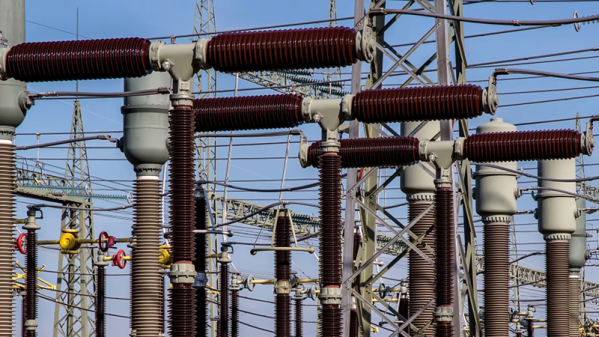Disappointing news this week for those longing for same-hour Amazon delivery as the retail giant tapped the brakes on its Prime Air drone deliveries. The pause is partially blamed on a December incident at the company’s Pendleton, Oregon test facility, where two MK30 delivery drones collided in midair during light rain conditions. A Bloomberg report states that the crash, which resulted in one of the drones catching fire on the ground, was due to a software error related to the weather. As a result, they decided to ground their entire fleet, which provides 60-minute delivery to test markets in Arizona and Texas, until a software update can be issued.
substation4 Articles
A Field Guide To The North American Substation
Drive along nearly any major road in the United States and it won’t be long before you see evidence of the electrical grid. Whether it’s wooden poles strung along the right of way or a line of transmission towers marching across the countryside in the distance, signs of the grid are never far from view but often go ignored, blending into the infrastructure background and becoming one with the noise of our built environment.
But there’s one part of the electrical grid that, despite being more widely distributed and often relegated to locations off the beaten path, is hard to ignore. It’s the electrical substation, more than 55,000 of which dot the landscape of the US alone. They’re part of a continent-spanning machine that operates as one to move electricity from where it’s produced to where it’s consumed, all within the same instant of time. These monuments of galvanized steel are filled with strange, humming equipment of inscrutable purpose, seemingly operating without direct human intervention. But if you look carefully, there’s a lot of fascinating engineering going on behind those chain-link fences with the forbidding signage, and the arrangement of equipment within them tells an interesting story about how the electrical grid works, and what the consequences are when it doesn’t.
Continue reading “A Field Guide To The North American Substation”
Restarting The Grid When The Grid Is Off The Grid
If you watch YouTube long enough, it seems like going “off the grid” is all the rage these days. But what if the thing that goes off the grid is the grid itself? In the video below the break, [Grady] with Practical Engineering explores the question: How do you restart an entire power grid after it’s gone offline? It’s a brilliantly simple deep dive into what it takes to restore power to large amounts of customers without causing major damage to not just the grid, but the power generators themselves.

The hackers among us who’ve dealt with automotive alternators know it must be excited in order to generate electricity. What does that even mean, and how does it affect the grid? Simply put, it takes power to make power. For example, old heavy equipment had what they called pony motors — a small easy to start engine that’s sole purpose was to start a much larger engine. Aircraft have auxiliary power units (APUs) for the same purpose. What do power grids have? You’ll have to watch the video to find out.
Once at least two power generators are online, grid operators can just flip the switch and start feeding power to customers, right? Not quite. [Grady] once again uses a clever test jig and an oscilloscope to show the damage that can occur if things aren’t done just right. It’s a fascinating video well worth watching.
Learn how grid operators use a Power Grid Emulator called LEGOS to help them with keeping the electrons flowing in the right direction.
Continue reading “Restarting The Grid When The Grid Is Off The Grid”
How The Power Gets To The Outlet
[Practical Engineering] is ready to explain how power substations get electricity to you in his latest video, which you can see below. One of the things we always notice when talking to people either in our community or outside it is that most people have no idea how most of the modern world works.
Ask your non-technical friend to explain how a cell phone works or how a hard drive stores data and you aren’t likely to get a very good answer. However, even most of us are only focused on some particular aspect of electronics. There are a lot of people who hack on robots or radios. The AC power grid,though isn’t something a lot of people work with as a hobby. Do you know exactly what goes on in that substation you pass every day on your commute? If you don’t, you’ll learn something in the video.













